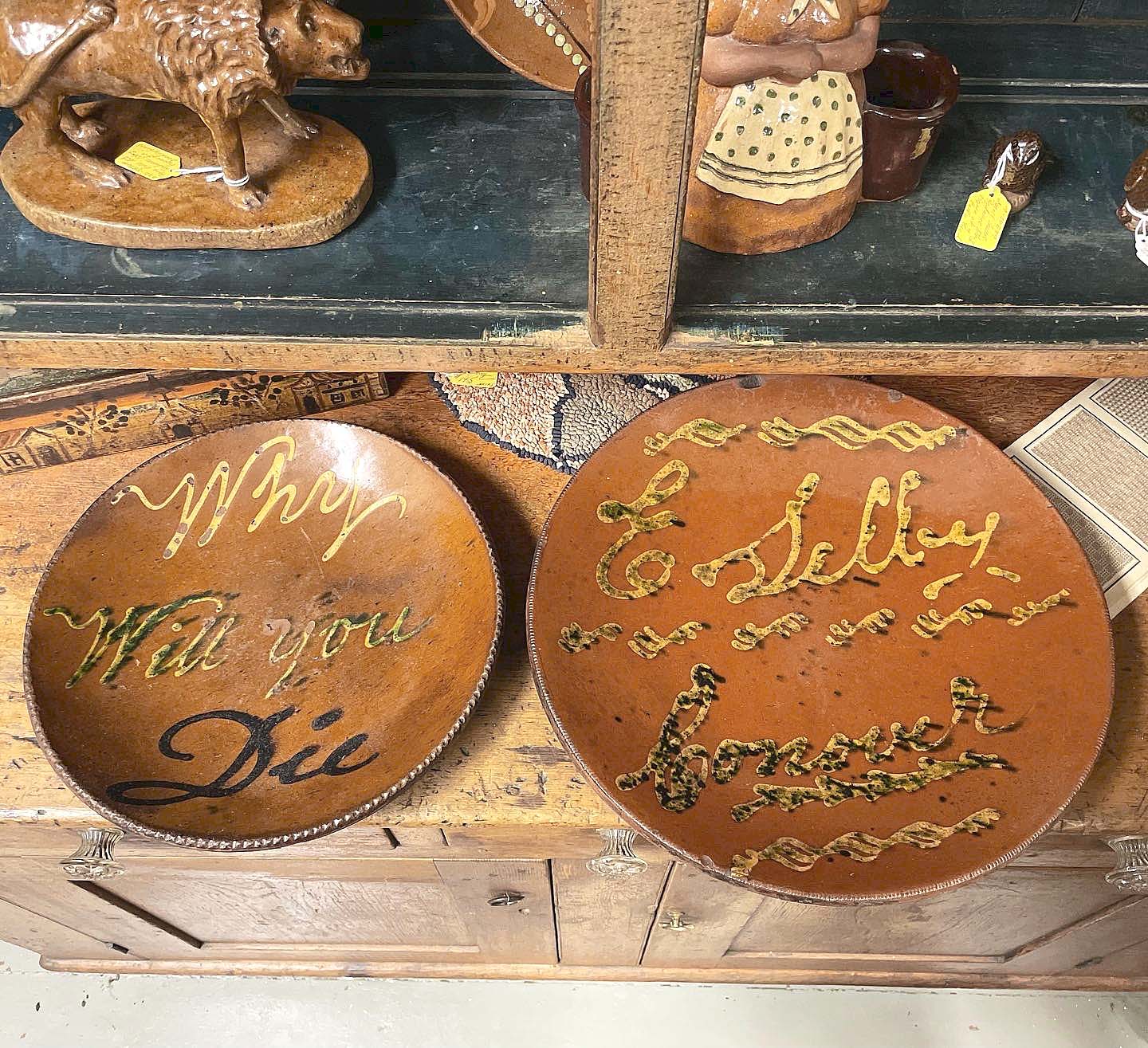
Two important Nineteenth Century slip-script-decorated red earthenware dishes made in New York. Both were previously owned by New York archaeologist and museum specialist George Hamell, as well as New York City ceramic specialists Garrison and Diana Stradling. Courtesy: Greg Kramer.
By Justin W. Thomas
NEWBURYPORT, MASS. — While recently visiting the home of Robesonia, Penn., antiques dealer Greg Kramer, I handled what I consider to be two of the most important examples of slip-script-decorated red earthenware made in the American Northeast in the 1800s. Both objects were previously owned by New York archaeologist and museum specialist George Hamell, as well as New York City ceramic specialists Garrison and Diana Stradling.
Both objects are important for their own reasons, although one of the plates can spark a conversation about origin, seeing that without the script, it could be mistaken for production in Pennsylvania, perhaps New Jersey, Long Island or Connecticut. Its inscription, “E.Selby / Conover,” however, suggests the brief partnership in the 1840s between the potters Edward Selby and Abraham Conover in Poughkeepsie, N.Y. This dish is evidence that there was red earthenware production in the Hudson River Valley region. Very few surviving pieces can be accurately attributed to the area because of similarities to wares produced elsewhere in the Northeast.
The second dish, which is one of my all-time favorite objects ever, was manufactured by a potter working in Connecticut and New York.
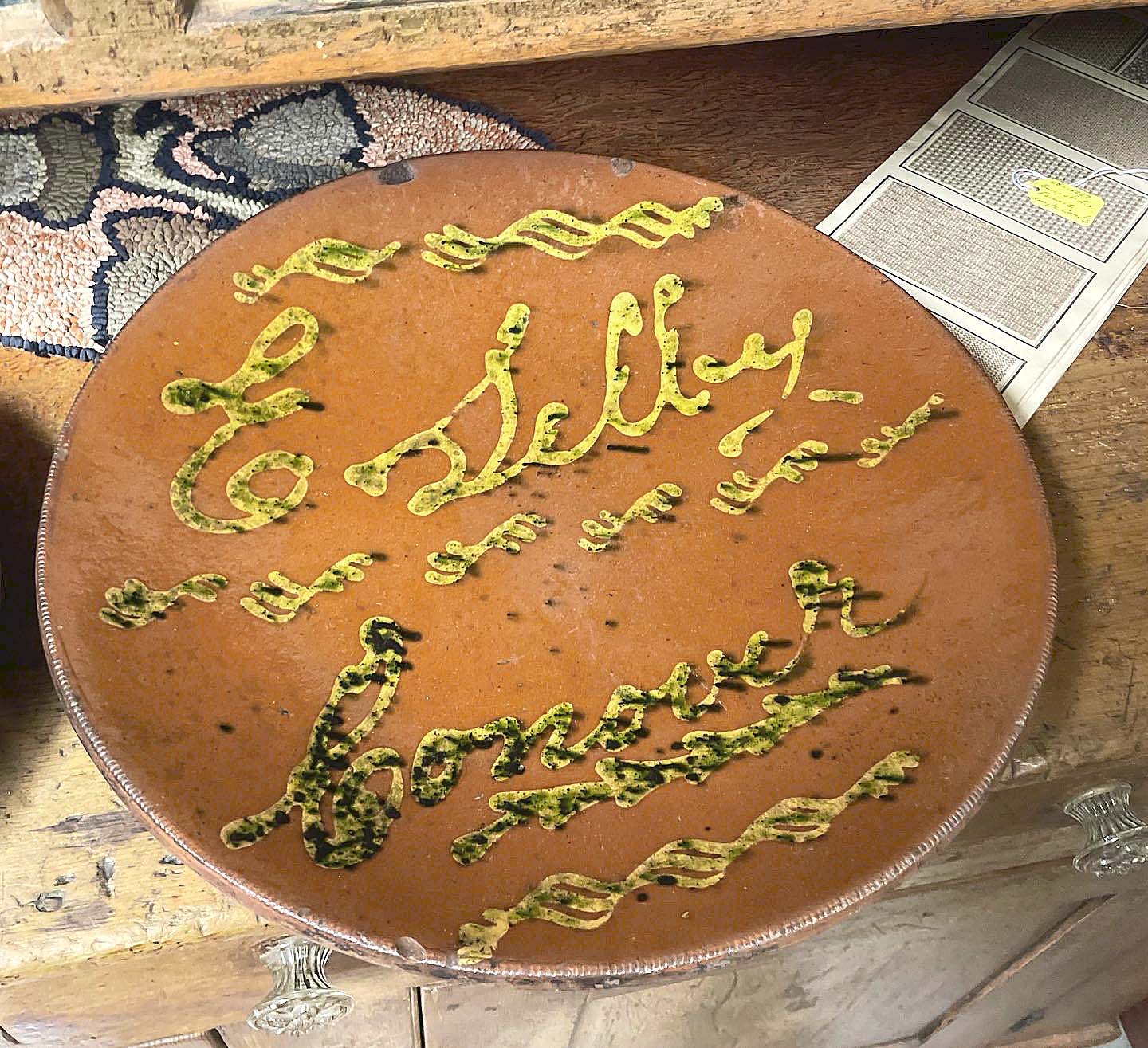
This plate is inscribed “E. Selby / Conover,” and it is thought to represent a brief partnership between the potters Edward Selby and Abraham Conover in Poughkeepsie, N.Y., in the 1840s. Courtesy: Greg Kramer.
According to the Reverend Charles Melbourne Selleck (1831-1909), who wrote the book Norwalk in 1896, “John Betts Gregory (1782-1842) was born in Norwalk (Conn.) in 1782 to Abraham and Elizabeth Gregory, who lived where the late Henry Marvin resided, on East Avenue, and south of the ancient Beacham Lane. He learned his trade (potter) of Absalom Day (1770-1843) of ‘Old Well (neighborhood in Norwalk).’ After his marriage to Olive (1786-1883), he had a good business offer from Huntington, Long Island, which he accepted. He afterward established a pottery in Clinton, Oneida County, N.Y., which required a building 140 by 40 for his operations. He returned in 1831 to Norwalk and bought from Samuel Hanford, Half-Mile Isle, paying $325. He there built a kiln for the burning of earthenware and stoneware. The kiln was erected in 1832 by masons Lewis and George Raymond of ‘Old Well.’ The business was here kept up until 1840. Mr Gregory died July 22, 1842.”
Situated almost 50 miles east of Syracuse, N.Y., and located between Rochester, N.Y., and Albany, N.Y., the Village of Clinton was settled in 1787 by Revolutionary War veterans and families from Plymouth, Conn., and named after New York’s first governor, George Clinton (1739-1812). This settlement eventually expanded into a town, joining Kirkland in the Nineteenth Century, when the original village was listed on the National Register of Historic Places in 1982.
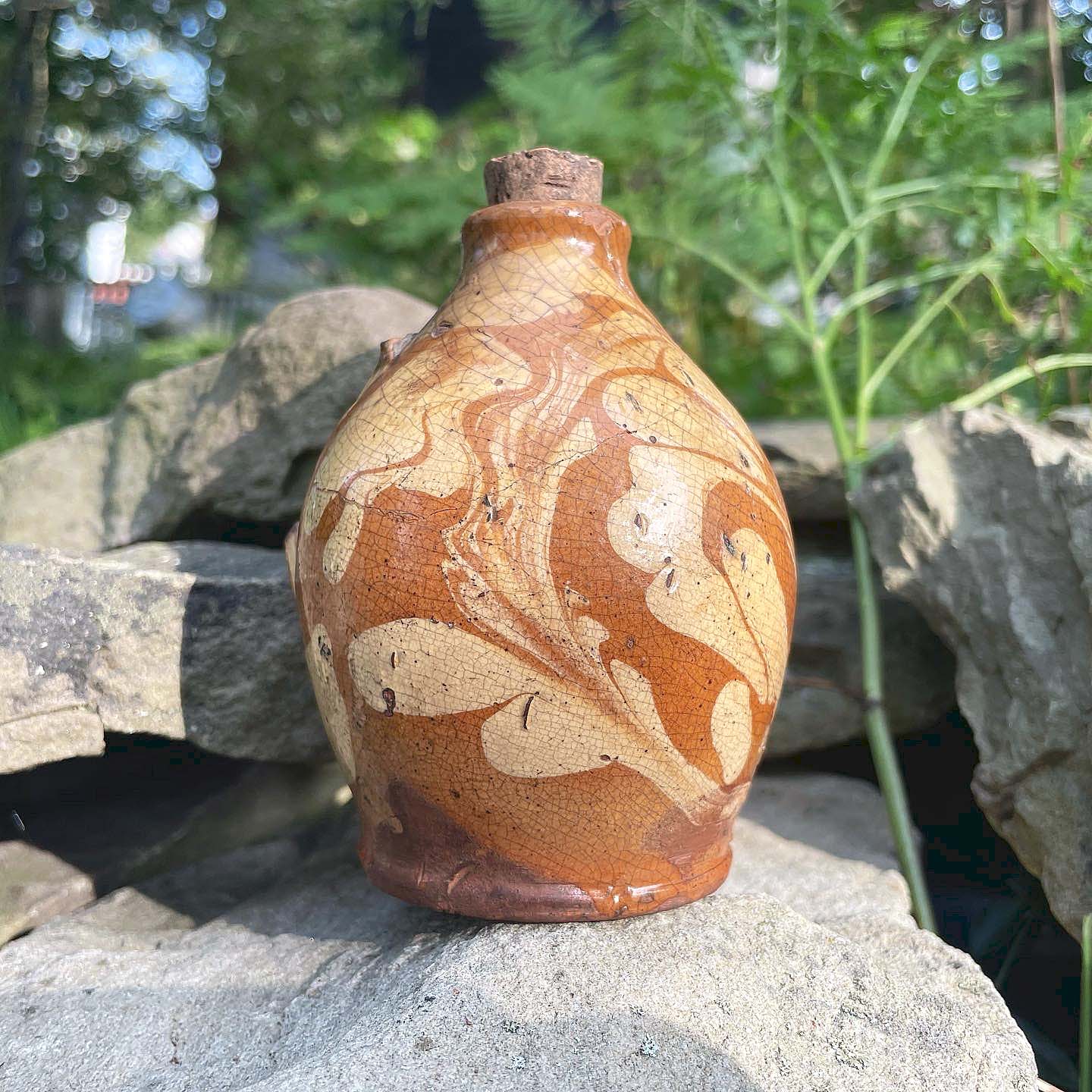
This late Eighteenth or early Nineteenth Century slip-decorated red earthenware jug bears some similarities to John Betts Gregory’s production in the Northeast.
The reasons why Gregory moved to landlocked upstate New York are unclear, though he may have had a simple desire to operate his own pottery, or had heard news of Clinton’s connection to Connecticut and other areas in this part of New York. He may also have been part of a wave of New Yorkers moving north for religious reasons.
Gregory arrived in Clinton sometime between 1808 and 1810 with his wife and two daughters and purchased a pottery from Erastus Barnes, Clinton’s first potter. He brought along his knowledge of slip-decoration and slip-script, which he had learned from Absalom Day in Connecticut, a New Jersey trained potter who arrived in Norwalk about 1793. He also likely practiced this type of production while employed on Long Island sometime around the late Eighteenth and early Nineteenth Century.
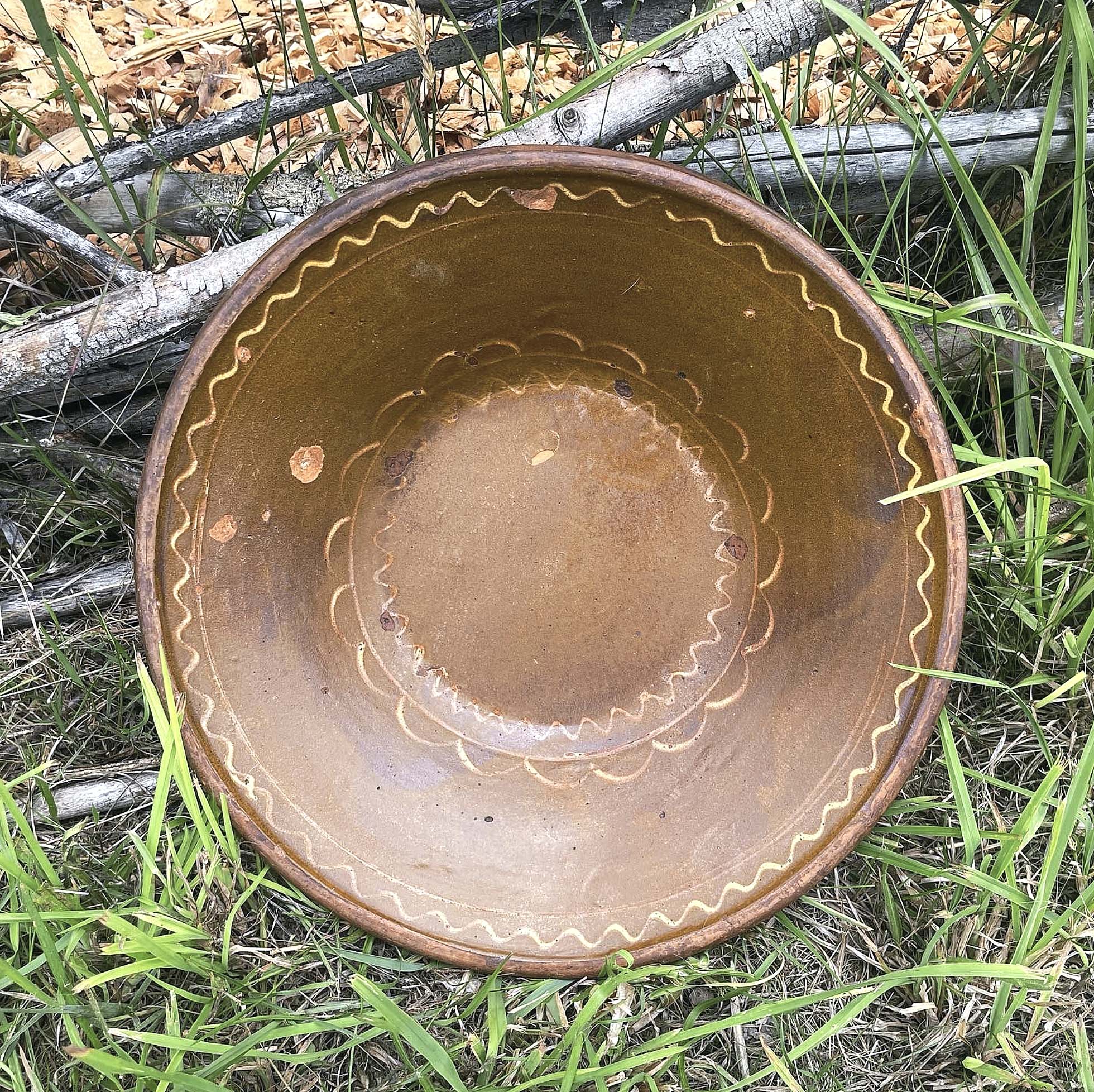
I recently acquired this Nineteenth Century slip-decorated red earthenware pan that shares similarities with New England production but, because of its history in New York’s Mohawk Valley, may have been made there. It relates to another slip-script pan in a private New York collection that is inscribed “Rome / 1830.”
Gregory may have been the first red earthenware potter producing slip-decorated pottery in upstate New York, a technique that was already practiced in downstate New York; it was later embraced by a number of potters employed in Western New York. During his 20 years in Clinton, from 1810 to 1829, he manufactured a lot of wares. The most notable of those objects today are the wares that have slip-decoration, but he must have produced simpler decorated pottery in the same manner, likely intended for local consumption.
Most of the types of objects that are accurately associated with Gregory’s production in New York are various types of slip-decorated red earthenware plates, some of which are decorated in multiple colors in a marbleized design, as well as plates decorated in script, such as examples owned by the Clinton Historical Society, Colonial Williamsburg and the Bennington Museum. Interestingly, another script example was recently discovered at a flea market in Connecticut with a name, an inscription, as well as “Clinton / 1826,” whereas another example sold through Crocker Farm in Maryland in 2009 with a similar inscription and “Clinton / 1824.” Archaeological examples possibly related to Gregory’s production have also been recovered from various contexts in New York City and on Long Island.
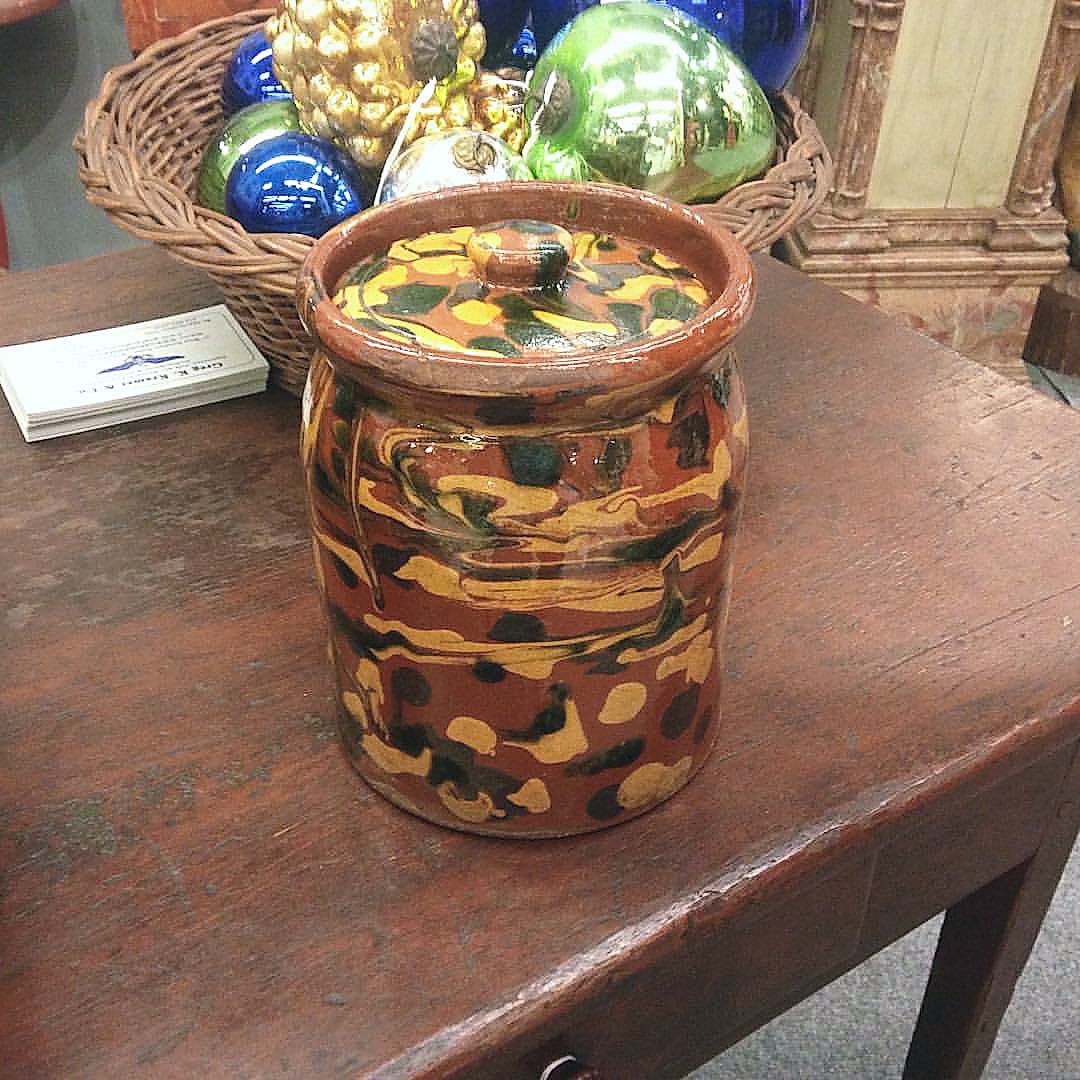
This Nineteenth Century red earthenware jar, with provenance to Ohio antiques dealer David Good and Pennsylvania antiques dealer Greg Kramer, recently, sold for $24,000 (including premium) on April 1 at Crocker Farm auctions. Courtesy: Greg Kramer.
Interestingly, the personalities of most early American potters are not known. However, author Amos Delos Gridley, who published in 1874 History of the Town of Kirkland, N.Y., described the businesses of Erastus Barnes and Gregory, as well as a first-hand account he had been told by someone who knew Gregory: “Erastus Barnes established the first pottery in Clinton, his works being nearly in the rear of the late Reverend Charles Jerome’s residence on College Street (Hamilton College established in 1793). He found clay of an excellent quality on the Gleason farm, near Manchester, and his business was, for those times, large and lucrative. Mr John B. Gregory succeeded him, and carried on the same industry for several years. He was quite a recluse, being seldom seen outside of his own premises. Yet he had a genial soul, and loved to scatter jokes and bits of humor among old and young who came to inspect his works or to buy his wares. He was a devout Methodist. Placing a lump of clay on his lathe, he would set his wheel a-spinning, and, while moulding pan or jug or other vessel, would burst into some old refrain, as, ‘Behold the potter and the clay! He forms his vessels as he please.’”
Among the best known examples of Gregory’s Clinton-produced slipware is a religious slip-script plate, inscribed, “Why / Will you / Die.” According to Ezekiel 23, the 23rd chapter in the Old Testament, “Say unto them, As I live, saith Lord God, I have no pleasure in the death of the wicked; but that the wicked turn from this way and live; turn ye, turn ye from your evil ways; for why will ye die, O house of Israel?”
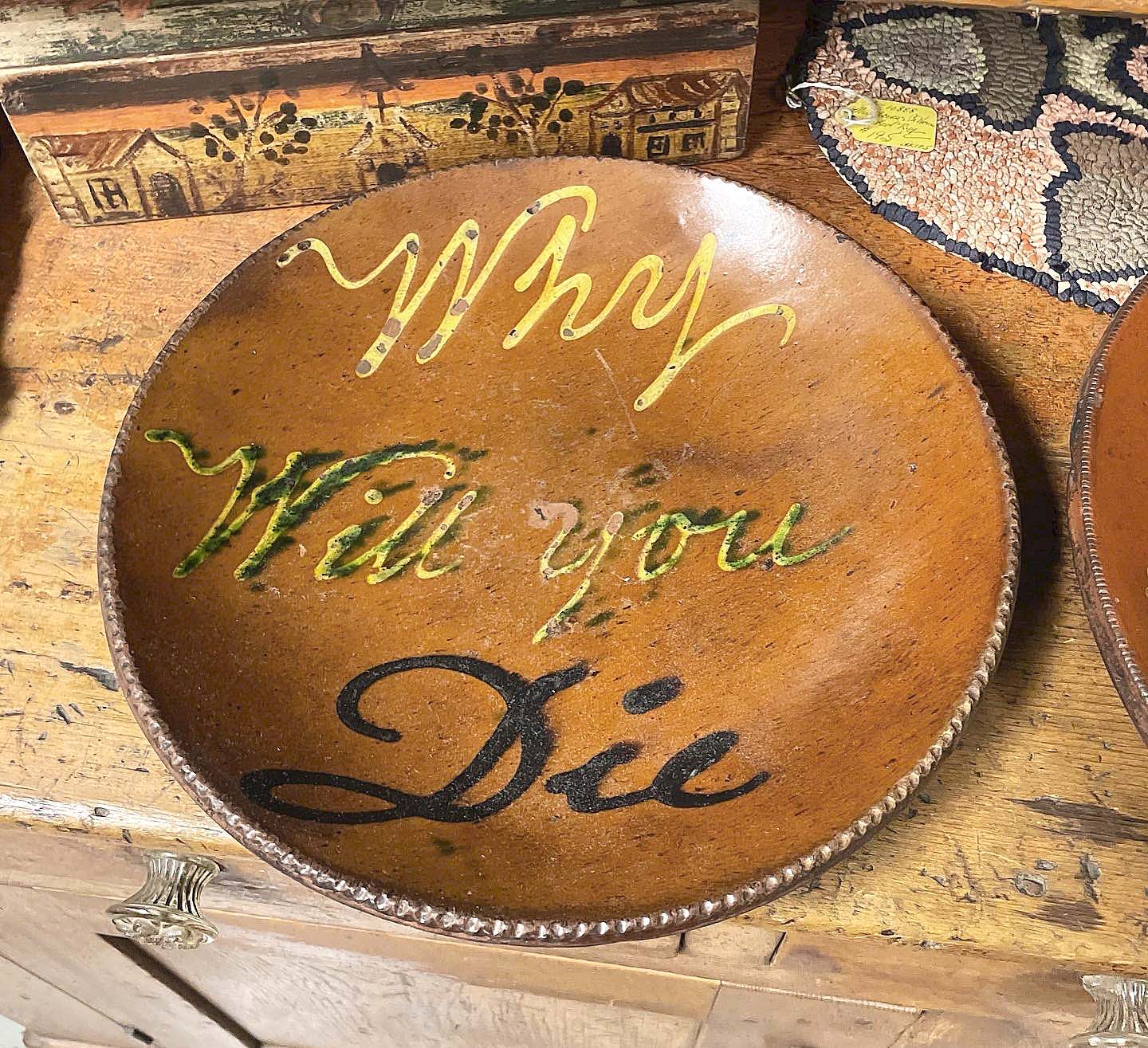
This plate is attributed to John Betts Gregory in Clinton, N.Y., circa 1810-20, and it is inscribed, “Why / Will you / Die,” a religious statement from Ezekiel 23 of the Old Testament. Courtesy: Greg Kramer.
But as Amos Delos Gridley stated, Gregory also made other forms; for example, it is known that he did produce some pitchers and vases based on significant examples that are marked with script and decorated with large eagle designs also in slip. Not a lot is known about this aspect of his production, although Portsmouth, N.H., antiques dealer Hollis Brodrick recently brought me a small slip-decorated red earthenware jug, which had been owned for many years by Gloucester, Mass., collector and dealer Roger Pheulpin. The jug is attributed to the Northeast sometime around the late Eighteenth or Nineteenth Century and the decoration is very similar to a slip-decorated jar previously owned by Ohio antiques dealer David Good and Greg Kramer that sold through Crocker Farm auctions in the spring of 2023. There has been some speculation whether the jug — and perhaps the jar — may have also been made by John Betts Gregory. More evidence is needed to support these assertions.

